2 min read
New Product Spotlight: SilvaStat360 Cost Component Analysis
Forest2Market
:
November 17, 2021
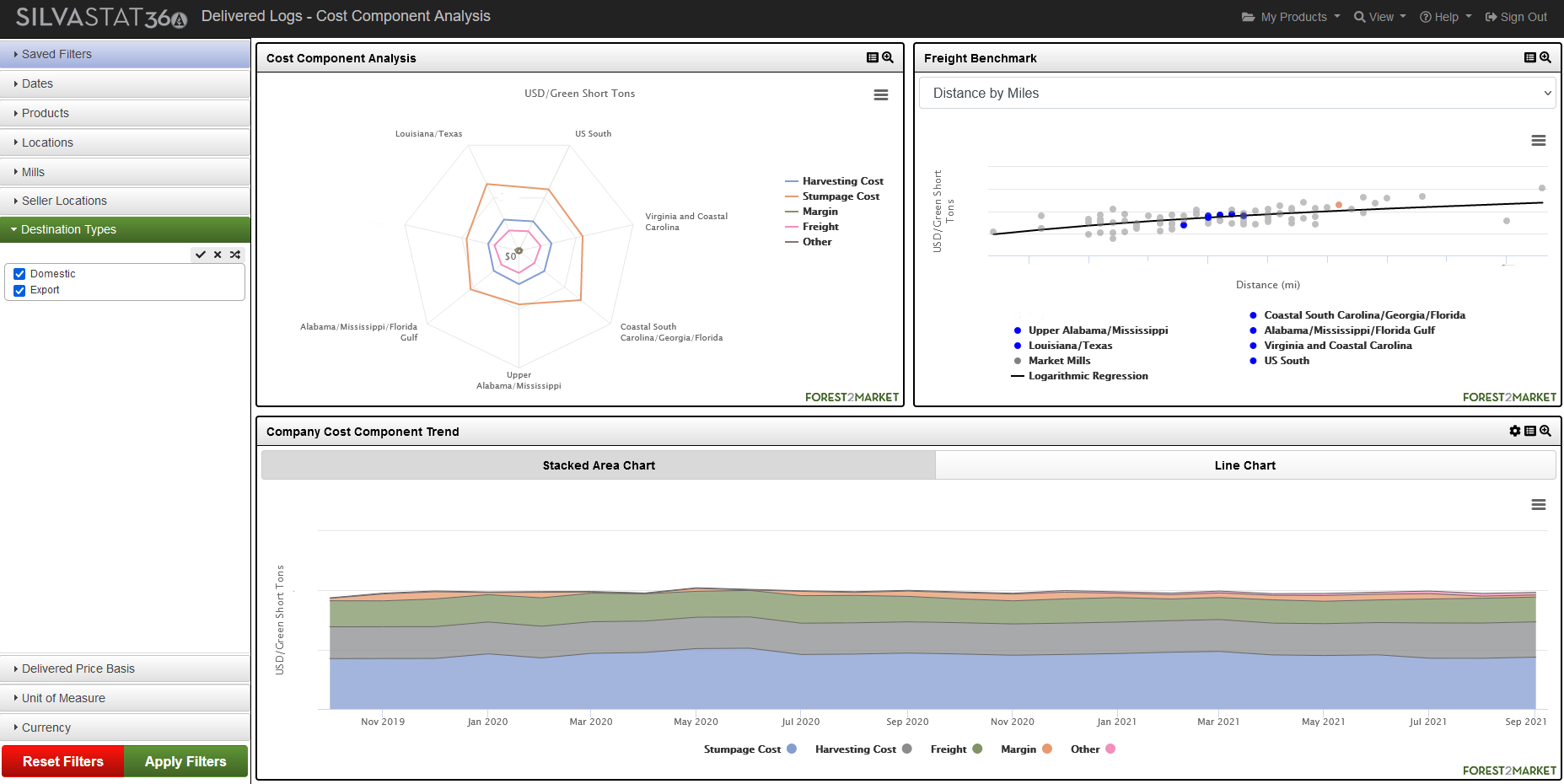
Since rolling out our groundbreaking SilvaStat360 interactive digital platform in 2017, Forest2Market has continued to develop a series of innovative and analytical solutions for participants in the global forest value chain. The breadth of data available via SilvaStata360 is unparalleled in the industry, and it provides Forest2Market customers with the on-demand data and tools that are most important to their unique business needs.
As we continue to add new features and functionality to the platform, we are pleased to introduce a series of innovative products that are designed to inform and stimulate better decision-making. Included in the new product rollout is a new Cost Component Analysis with multiple visualizations designed to help consumers of wood fiber better understand the breakdown of their total delivered costs.
Accurate delivered price data is essential for consumers of wood raw materials—especially in the current market, which is rapidly evolving to meet new consumer demands. Forest2Market collects delivered price data on every load of wood, which also includes individual cost components:
- Stumpage
- Harvesting/Handling
- Freight to Mill
- Dealer Margin
- Other
Understanding a mill’s position, advantages, and disadvantages vs. the market in each of these components is the first step in identifying areas of improvement that can drive significant savings and increased profitability. For subscribers to Forest2Market’s Delivered Price Benchmark service, the new Cost Component Analysis allows for unprecedented insight and visibility into these criteria.
Cost Components Visualization
The SilvaStat360 Cost Component Analysis dashboard provides interactive charts that help users visualize the data that correspond to their mill facilities and the larger market. Users can sort by date, product, location and mill, destination type, as well as filter by unit of measure, currency, and other criteria. The data and visualizations can also be downloaded and exported as images to be used in presentation formats.
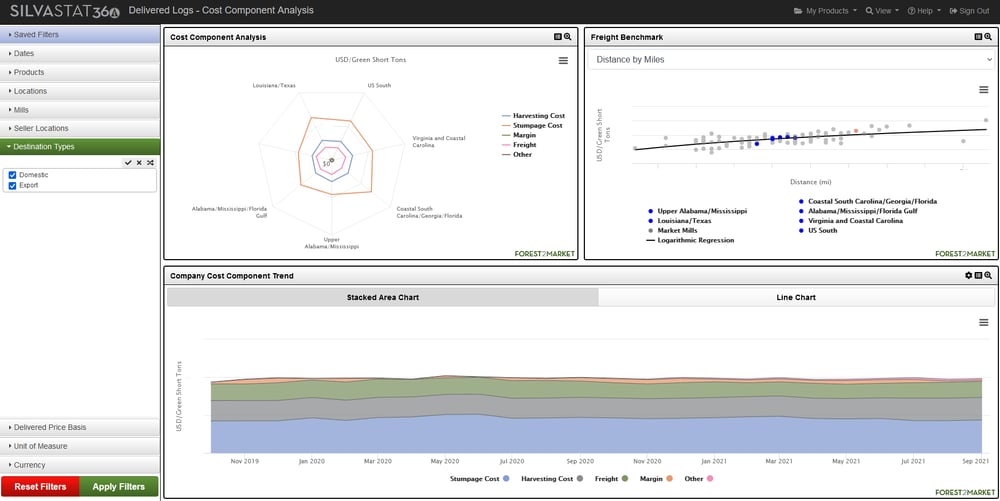
Going a step further, in the screenshot below we can see total delivered log price for a single mill in a new radar chart format. In this particular analysis, users can hover over each point in the chart and get instant cost component data for a region, individual markets, and the mill itself. Users can also turn components on/off to dive into deeper analysis of specific costs, and easily toggle between data points for seamless performance comparisons.
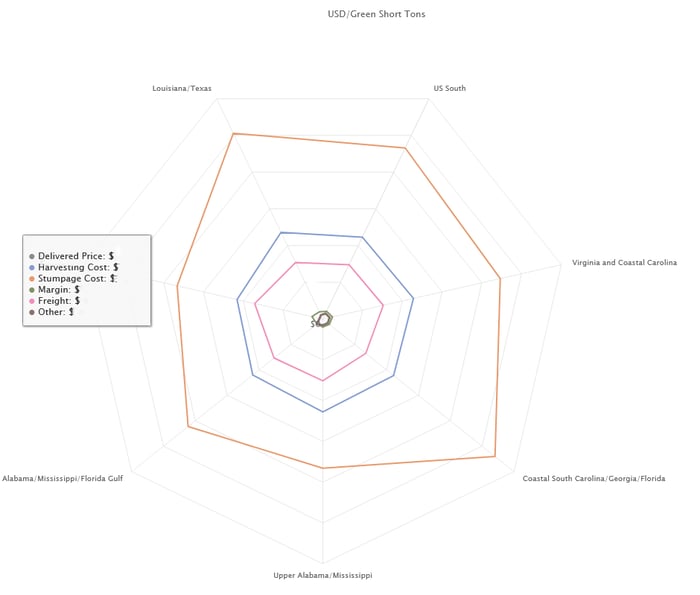
In the second visualization, we can see freight performance for delivered logs via distance by trucking miles throughout a particular wood basket. Data includes both company/mill and regional market prices, as well as regression prices for each; the “X” axis displays distance in miles and the “Y” axis displays dollars per ton. In the particular analysis below, each dot represents an actual market freight price per ton by mile, which provides greater insights into individual mill freight efficiencies and/or inefficiencies.
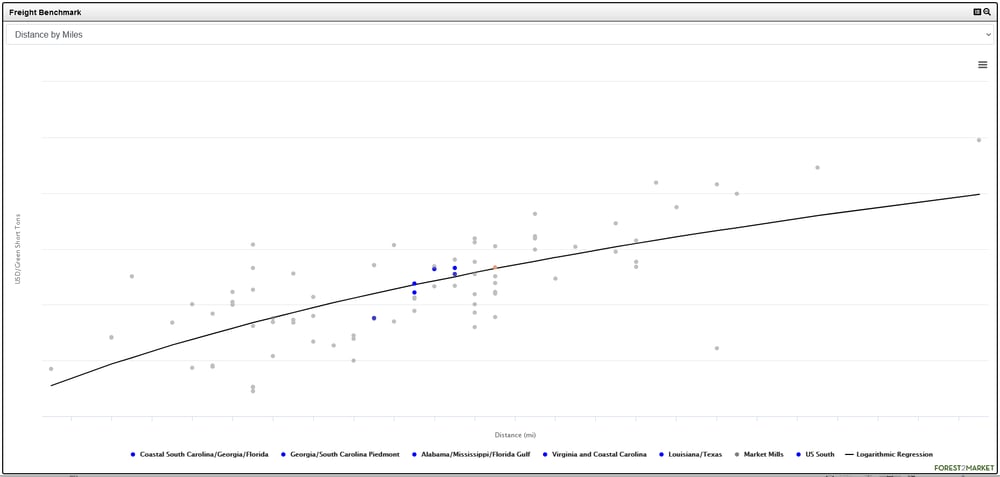
Finally, the new Company Cost Component Trend tool provides a detailed look at delivered price components over time. Like the radar chart tool, users can hover over each point in this chart and get instant cost component data for their individual mill(s) on a monthly basis.
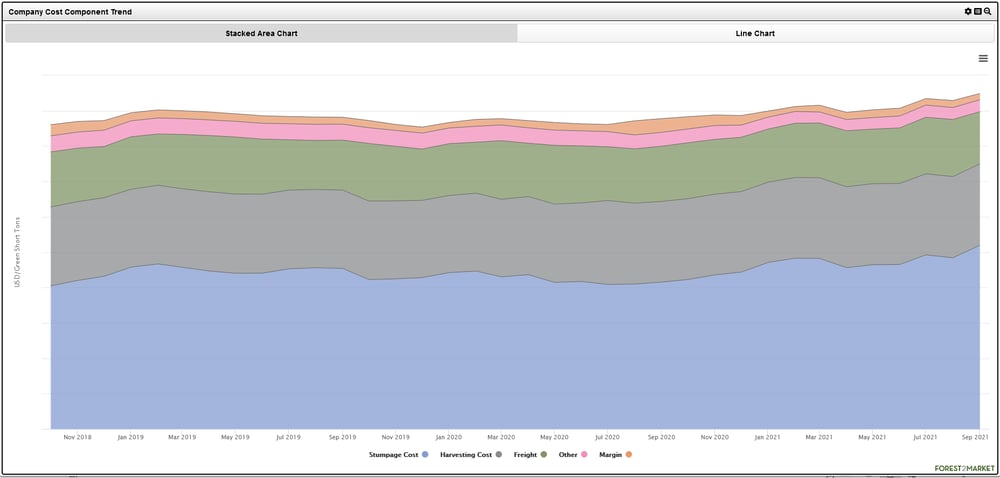
With the new Cost Component Analysis visualizations, Forest2Market subscribers have even deeper insights into their delivered fiber costs, which allows them to better compare their company-wide and individual mill delivered costs to the market by filtering data and identifying opportunities for improvement.
Improving supply chain efficiencies is the single most effective method to boost profitability within the free market for fiber transactions. Supply and demand will always drive prices up or down. Optimizing supply chain efficiencies, however, will not only make the forest products industry more competitive within the free market, it will also make specific operations more profitable.




